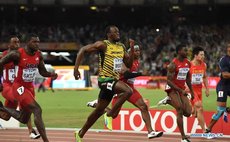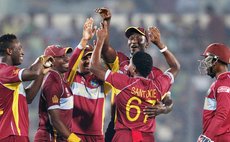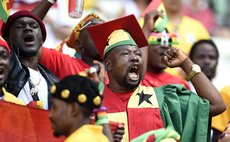Money, money, money
I am thankful to an article on the internet for data used in support of my current inferences about West Indies Cricket. We are reliably informed that the top West Indies players in the Indian Premier League receive upwards of U.S $47,300 ($122,980 E.C) for the six weeks of that tournament. If you are the renowned hitter that Chris Gayle is, you would more likely be taking in at least US $87,300 (or EC. $226,980) in view of your significantly special glamour appeal. Maybe even much more! Lesser mortals like Andre Russell, Dwayne Bravo and Lendl Simmons fall somewhere splendidly placed in the interim. Beautiful, but before giving way to extreme envy, please consider the life of an ace cricketer is an arduous, and even a precarious one as far as longevity goes. Quite a number of players do, in fact, fall off the charts due to troublesome injuries.
How well does the elite West Indies player compare with, say, his Australian counterpart? Not having relevant figures for the I.P.L, let's look at the Test Match pay scenario. A batting stalwart like Steve Smith or David Warner is assured of match fees totaling U.S $11, 200 (EC $29,120) for a home Test. The fees awarded for a Test played overseas come to around U.S $15,700 (or EC $40,820).
There are several of our players awarded retainer contracts by the West Indies Board. However, it would seem none of the top flite ones have opted to sign, presumably because of a preference to be free to move elsewhere for more lucrative options. The twelve West Indians receiving retainer contracts are split into three separate pay categories ranging between (U.S) $100,000 (EC $260,000) and (U.S) $140,000 (EC $364,000) per year. The contract payments come in monthly tranches.
Compared to this the lower ranked Australian Test Player who is awarded a retainer contract receives U.S $182,000 ($473,200 EC.) per year, against this the top contracted Australian player receives in the vicinity of U.S $1,100,000 (or EC equivalent of $2,860,000) per year.
Clearly, there's a significant disparity between what the Australian players receive and what the West Indian players receive – a situation fully recognized by Clive Lloyd, chairman of selectors and former West Indies captain, who feels there is a level of unfairness in an ICC global revenue structure which sees the three top cricketing nations Australia, England and India receiving lopsided shares of the cake, leaving remaining Test playing countries West Indies, Sri Lanka, New Zealand, South Africa, Bangladesh, Pakistan and Zimbabwe, relatively speaking, to collect the crumbs.
Lloyd argues it this way: "To run cricket you have to have quite a lot of money. People must realize where West Indies is concerned, we have a plethora of islands. We can't drive anywhere, we have to fly everywhere. The money should be equally distributed because we're all playing Test cricket…. You can't have three countries doing extremely well and then the rest not getting a fair match". Since the distribution from the global revenue pile is, in a sense, related to playing strength and competitive impact, Lloyd makes a plea for better arrangement of tour schedules. He thinks West Indies was not afforded suitable preparation time for its last tour of Australia at year's end 2015-2016. West Indies played their first Test against Australia at Hobart after just one warm up watch. After travelling 12,000 miles to Australia and suffering the effects of jet lag and needing to acclimatize to several variable factors, a minimum of two four day matches were required as preparation.
Darren Sammy's verbal tirade at the end of the I.C.C T20 World Cup underlines the gross necessity for much to be done to address Caribbean cricket issues, and a situation where the top West Indies players could contemplate withdrawing from a series already in progress in India ought never to have arisen. I have said it more than once, the board has consistently been an ugly piece of dislocation from the administrative viewpoint. The timing of whatever it does always tends to be critically distressing. Then, too, there is equal dismay as to what has not been done to buttress the quality of our cricket, particularly at Test playing level.
When it was decided in 2014 to cut match fees paid to the West Indies team, reportedly from a high of U.S $17,500 to a low of U.S $5,000 per player there inevitably was a hopeless ingredient of misinformation in the dealings. In any case, the timing of negotiations of this nature ought to have featured very well clear of any embarkation on an important tour. The West Indies seem to be the only country reported as repeatedly facing tour threatening money issues. We don't seem to hear this in relation to Pakistan, Sri Lanka, and Bangladesh etc.
Whatever Emanuel Nanthan uttered as vice-president of the West Indies Board in an attempt to placate the misgivings harbored by Sammy and Co, there is an understanding that there is a move afoot to level the playing field in relation to improving the financial attractiveness of cricket for all concerned. The women cricketers, poor and needy cousins of the sport that they now are, have been awarded some little benefits. Miniscule, you would say, relevant to the men. Makes me see wisdom in quoting a noted Indian economist of several years ago: "In underdeveloped countries it is always more a matter of an equal distribution of dissatisfaction than an equal distribution of satisfaction!" From what I saw in the women's World Cup, ignoring the fact that their very good cricket was not well patronized crowd-wise, they need to be given serious support. However, much is left within their power. Women should themselves turn up to support their own World Cup event.




